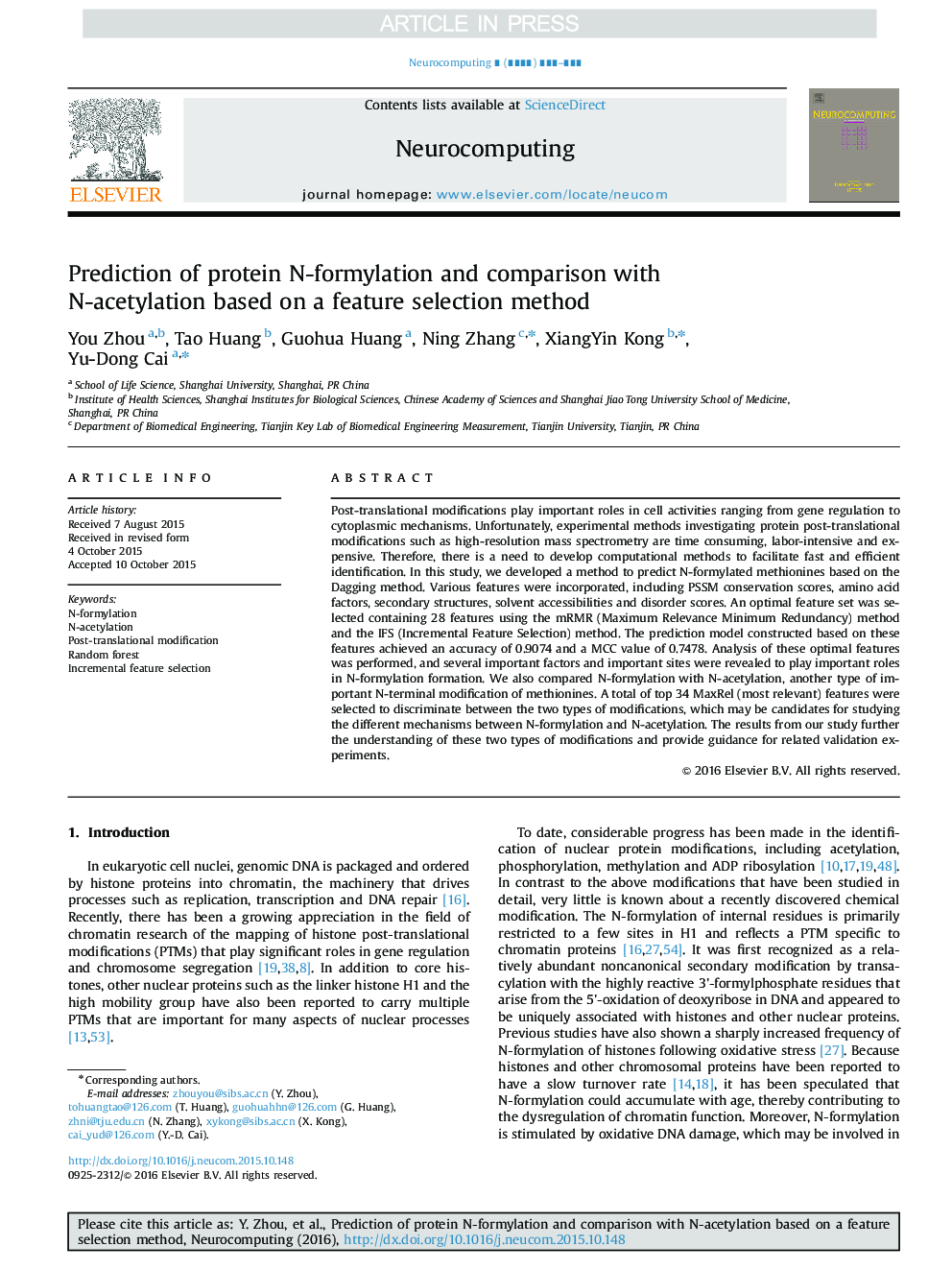| Article ID | Journal | Published Year | Pages | File Type |
|---|---|---|---|---|
| 4948276 | Neurocomputing | 2016 | 10 Pages |
Abstract
Post-translational modifications play important roles in cell activities ranging from gene regulation to cytoplasmic mechanisms. Unfortunately, experimental methods investigating protein post-translational modifications such as high-resolution mass spectrometry are time consuming, labor-intensive and expensive. Therefore, there is a need to develop computational methods to facilitate fast and efficient identification. In this study, we developed a method to predict N-formylated methionines based on the Dagging method. Various features were incorporated, including PSSM conservation scores, amino acid factors, secondary structures, solvent accessibilities and disorder scores. An optimal feature set was selected containing 28 features using the mRMR (Maximum Relevance Minimum Redundancy) method and the IFS (Incremental Feature Selection) method. The prediction model constructed based on these features achieved an accuracy of 0.9074 and a MCC value of 0.7478. Analysis of these optimal features was performed, and several important factors and important sites were revealed to play important roles in N-formylation formation. We also compared N-formylation with N-acetylation, another type of important N-terminal modification of methionines. A total of top 34 MaxRel (most relevant) features were selected to discriminate between the two types of modifications, which may be candidates for studying the different mechanisms between N-formylation and N-acetylation. The results from our study further the understanding of these two types of modifications and provide guidance for related validation experiments.
Keywords
Related Topics
Physical Sciences and Engineering
Computer Science
Artificial Intelligence
Authors
You Zhou, Tao Huang, Guohua Huang, Ning Zhang, XiangYin Kong, Yu-Dong Cai,
